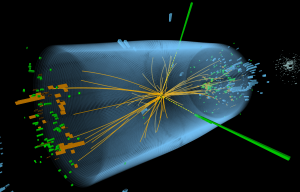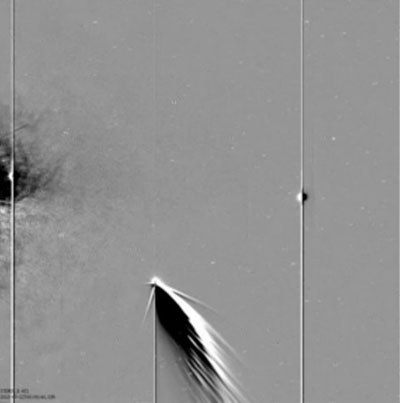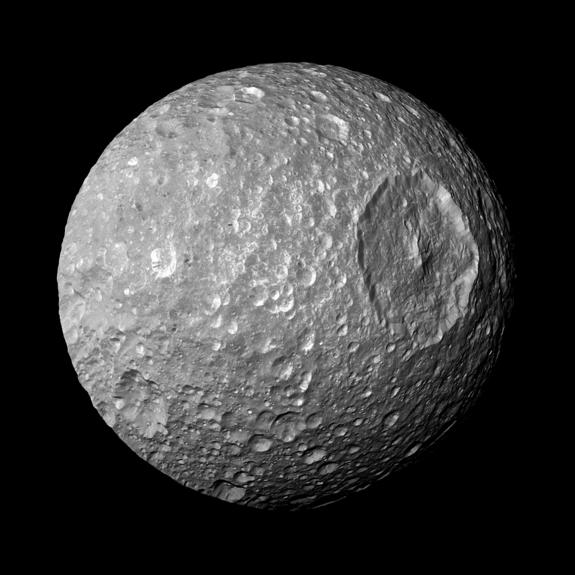Mimas (pronounced MY muss or MEE muss, adjective Mimantean) looks somewhat like a bull’s eye if viewed from a certain angle.(Or the Death Star if your a Star Wars Fan) The feature that causes this is the huge 140-kilometer-wide (88-mile) Herschel Crater, which is one-third the diameter of Mimas. If the object striking Mimas had been larger or been moving faster, Mimas would probably have been “disrupted” into pieces that might have collapsed back into a new moon or might have scattered into another ring of Saturn. The walls of Herschel Crater are approximately 5 kilometers (3 miles) high, parts of the floor are approximately 10 kilometers (6 miles) deep, and the central peak towers are almost 6 kilometers (4 miles) above the floor of the crater. A comparable crater on Earth would be 4,000 kilometers (2,500 miles) in diameter.
Mar 17
Saturn’s Moon Mimas
Mimas (pronounced MY muss or MEE muss, adjective Mimantean) looks somewhat like a bull’s eye if viewed from a certain angle.(Or the Death Star if your a Star Wars Fan) The feature that causes this is the huge 140-kilometer-wide (88-mile) Herschel Crater, which is one-third the diameter of Mimas. If the object striking Mimas had been larger or been moving faster, Mimas would probably have been “disrupted” into pieces that might have collapsed back into a new moon or might have scattered into another ring of Saturn. The walls of Herschel Crater are approximately 5 kilometers (3 miles) high, parts of the floor are approximately 10 kilometers (6 miles) deep, and the central peak towers are almost 6 kilometers (4 miles) above the floor of the crater. A comparable crater on Earth would be 4,000 kilometers (2,500 miles) in diameter.
Mar 16
It’s Official: We’ve Found the Higgs Boson. But Which One?
I found this story over on Scientific American and found it interesting

When last we checked in on the hunt for the Higgs, physicists weren’t yet ready to call the deal done. They were only willing to say that they had discovered a new particle—some sort of boson—and that this new boson was “Higgs-like.” Their reticence hinged on the measurement of the new particle’s spin, a fundamental quality that, for bosons, must take an integer value such as 0, 1 or 2. Both in July, whenthe proto-Higgs was first announced, and in November, when scientists released additional data analysis, they didn’t have enough data to definitively say that the boson had a spin of zero, which a Higgs must have.
That uncertainty has now melted away. This week, physicists gathered in Moriond, Italy announced that additional data from the Large Hadron Collider’s 2012 data run now conclusively show that the new boson has a spin of zero, and is thus a Higgs boson
Mar 15
NASA Spacecraft Sees Comet, Earth and Mercury Together
 Image Credit:NASA
Image Credit:NASA
A new video from a NASA spacecraft studying the sun has captured an unexpected sight: a wandering comet posing with the planets Earth and Mercury.
The cosmic view comes from one of NASA’s twin Stereo spacecraft that constantly watch the sun for signs of solar flares and other space weather events. It shows Mercury and Earth as they appeared with the Comet Pan-STARRS, a comet that is currently visible from the Northern Hemisphere during evening twilight.
The probe captured the video of Comet Pan-STARRS, Earth and Mercury together while observing the sun from March 9 to March 12.


